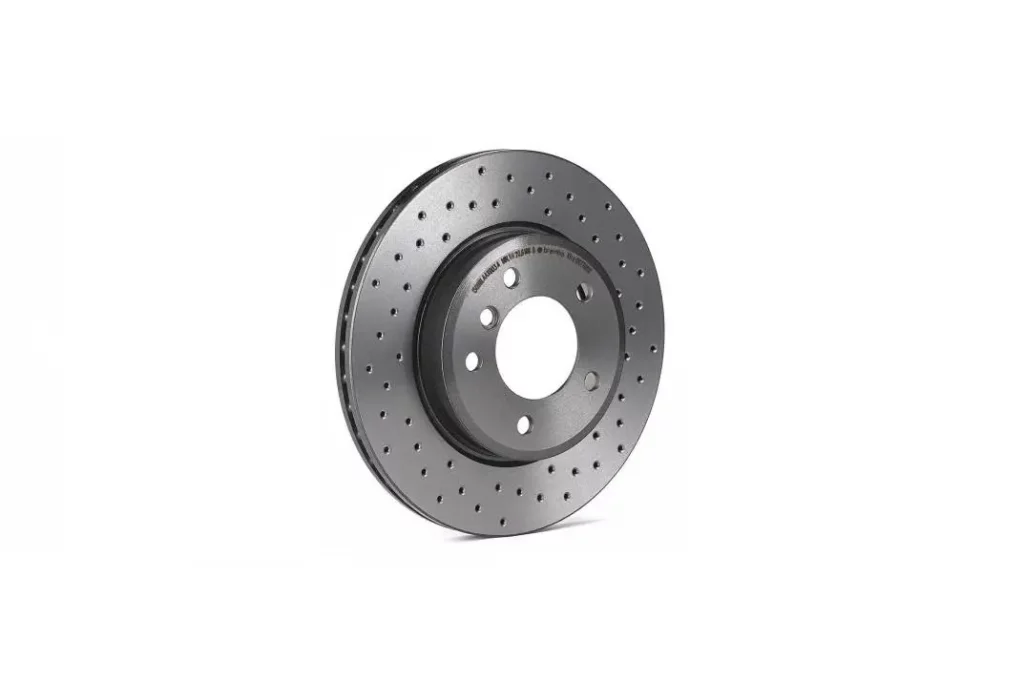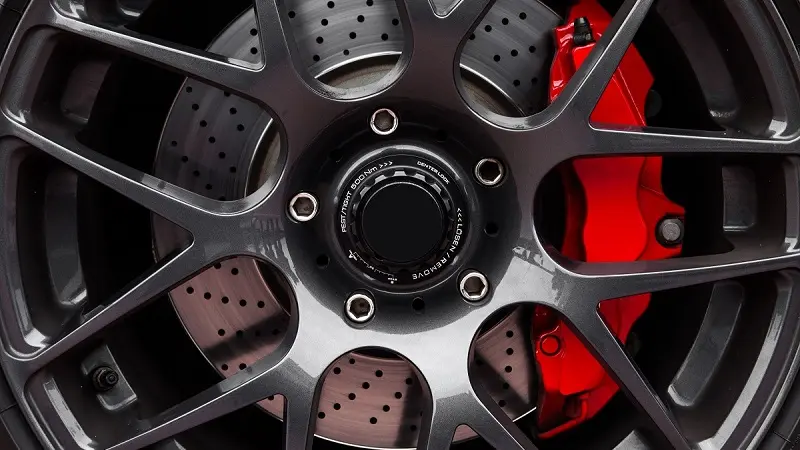The brakes are one of the most essential safety features of any vehicle. Your brakes play a crucial role in the performance of your car, as well. For these reasons, enthusiasts are always looking to upgrade the braking hardware on their cars.
If you choose to stray away from the OE replacement options sold by BMW, there are several aftermarket brake rotor options that you might find interesting. But with so many products on the market, it can take time to determine which aftermarket brake rotors are worth the investment.
In this article, we’ll look at everything there is to know about aftermarket brake rotors. We’ve included information on how they differ from OE ones, what you should be looking for in a set, and how different factors will affect performance.

What Do Brake Rotors Do?
Brake rotors, also referred to as brake discs, are a vital part of your car’s braking system. When you press your foot down on the brake pedal, the brake pads clamp down on the rotors connected to the wheel hub, creating friction that slows the car down.
As you can imagine, this friction generates a lot of heat, and a massive factor in the efficacy of a brake rotor is how effectively it can dissipate this heat. If the brake rotors get too hot, you will experience what is commonly referred to as brake fade — a drastic, noticeable loss in brake bite and power. This is why the material and design of your brake rotors can make a world of difference, depending on their intended application.
OEM vs. Aftermarket Brake Rotors
OEM (Original Equipment Manufacturer) parts come standard with a vehicle. On your BMW, the OEM brakes can vary depending on the model. For instance, the range-topping BMW M550i xDrive will have higher-spec brakes than the entry-level BMW 330i.
When you buy a BMW, you also have the option to spec the car with M Performance braking hardware. One of these components is the M Sport brake discs. These discs are made from more durable materials and feature better heat-dissipating properties. All of this translates to better performance. The only pitfall in an otherwise straightforward solution to improved braking is the price the M Sport hardware demands. That’s where aftermarket brakes come in.
Aftermarket brake rotors are manufactured by a third-party company (that often supplies parts to a car manufacturer). They are usually designed to perform better than most stock OEM brake rotors, although this depends on the brand and particular product.
We offer aftermarket brake rotors from Brembo that bring better performance, better cooling, and a combination of advanced technologies to the table.
The essential advantage of aftermarket brake rotors is that you can find one that best suits your specific needs. Suppose you intend to take your BMW 330i to the racetrack. In that case, the stock braking equipment won’t cut it, and investing in aftermarket parts with higher-quality materials and often more advanced designs will deliver improved performance and durability. These aftermarket options might also be less expensive than a part that offers similar performance from the car manufacturer — in this case, BMW.
Remember that not all aftermarket brake rotors are of equal quality, and some may not meet the same safety and performance standards as OEM discs. The following section should give you a better idea of how you can get reliable parts for your Bimmer.
What to Look For in Aftermarket Brake Rotors?

The best aftermarket brakes factors will boil down to several factors like model compatibility, material, and, most importantly, your specific requirements. While there are multiple high-performance brake rotors out there, not all of them will be compatible with your particular BMW, so you may have to come to a compromise.
Next, there’s the material and design. Most OEM brake rotors are made from steel, but more premium ones usually use a carbon-ceramic composite with better thermal properties and durability.
The deciding factor in getting aftermarket brake rotors should be your expectations. There’s no point in spending serious money on performance brake rotors if your car is going to spend most of its time pottering around the city. Similarly, while more affordable, a more street-oriented set of aftermarket brake rotors will let you down when you take your car to the track.
By considering these factors and knowing what you want, you can pick the best aftermarket brake rotors for your BMW.
What Are the Best Aftermarket Brake Rotors?
While there’s no one correct answer to this, some brands specialize in manufacturing excellent braking hardware and produce better products than others. One such example is Brembo. The Italian automotive brake manufacturer has been in the business for over 60 years and makes some of the best brakes money can buy. A testament to this is that nearly every Formula 1 car on the 2022 grid was running Brembo hardware.
One of the more popular products in its street portfolio is the Brembo Xtra line. These aftermarket brake rotors feature a drilled design that ensures optimal heat dispersion even under heavy use. They’ve also been designed to deliver impressive performance in the wet and come with a UV coating for protection against corrosion. The Brembo Xtra is an excellent choice if you’re looking for an aftermarket rotor that delivers better performance than most OEM options without costing a significant premium.
Are Aftermarket Brake Rotors Worth It?
Aftermarket brake rotors often offer improved performance and durability compared to factory-fit hardware, so investing in them makes sense. They’re also necessary if you intend to take your car to the track often or if you drive in more demanding conditions where the OEM rotors may not be adequate.
In conclusion, stick to brands you can trust and buy them from sources you can trust. Bimmers.com stocks OEM and aftermarket brake rotors for your BMW, so you can compare them before making a decision. Just search the website using your car’s model and year, and you’ll be shown only options that are a perfect fit.





